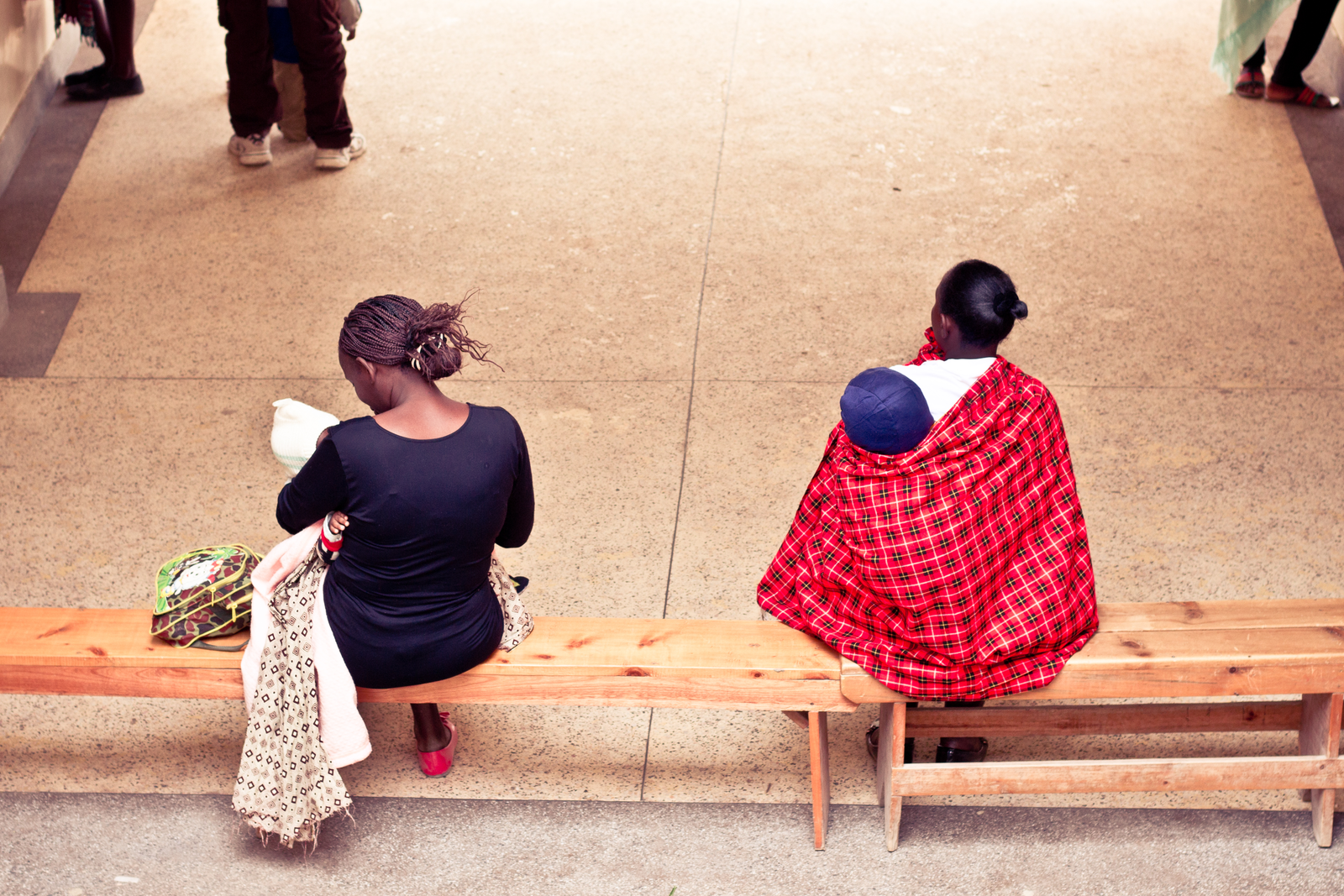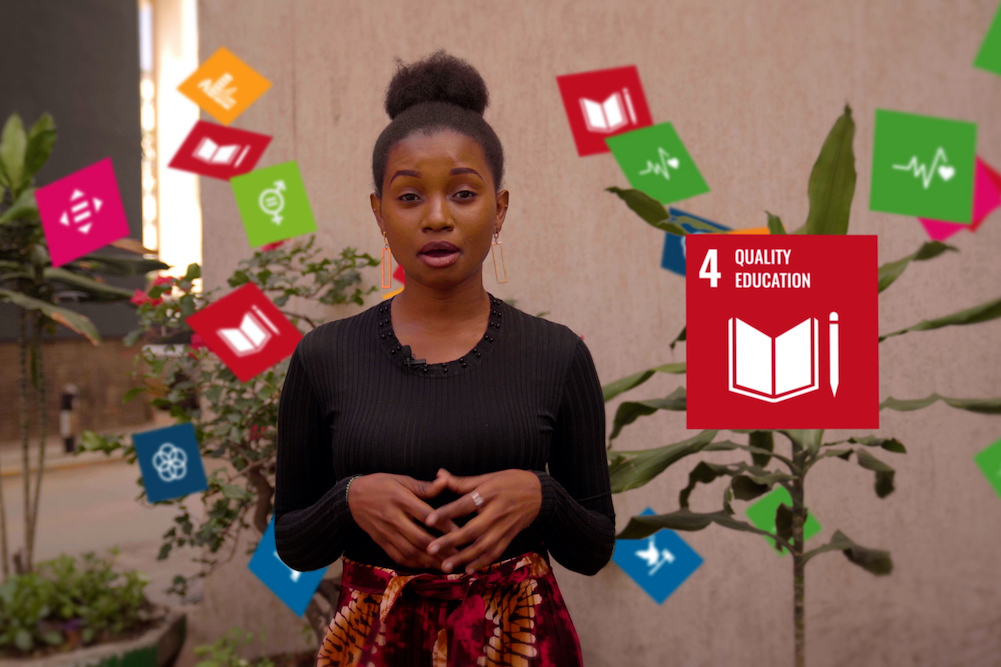
Sustainable Development Goals

This page introduces the Sustainable Development Goals, the global commitments to end poverty, protect the planet and promote peace. It looks in detail at several of the goals and how Theirworld's work is underpinned by these goals.
The United Nations’ Sustainable Development Goals are worldwide commitments to create positive global change by the year 2030.
They are an agenda to:
- End poverty, promote equality and support people’s wellbeing
- Create prosperity
- Protect the planet and tackle climate change
- Promote peace
- Encourage partnerships
These are complex and interconnected areas. So the Sustainable Development Goals (SDGs) recognise that ending poverty must go hand-in-hand with plans to build economic growth and take action on a range of social needs including education, health, social protection, and job opportunities, climate change and environmental protection.
The SDGs came into force on January 1, 2016. They are not binding for countries but they are unique because they call for action by all 193 countries which are members of the United Nations, whether they are poor or rich.
What are the UN Sustainable Development Goals?
There are 17 goals:
- End poverty in all its forms everywhere.
- End hunger, achieve food security and improved nutrition and promote sustainable agriculture.
- Ensure healthy lives and promote well-being for all at all ages.
- Ensure inclusive and quality education for all and promote lifelong learning.
- Achieve gender equality and empower all women and girls.
- Ensure access to water and sanitation for all.
- Ensure access to affordable, reliable, sustainable and modern energy for all.
- Promote inclusive and sustainable economic growth, employment and decent work for all.
- Build resilient infrastructure, promote sustainable industrialisation and foster innovation.
- Reduce inequality within and among countries.
- Make cities inclusive, safe, resilient and sustainable.
- Ensure sustainable consumption and production patterns.
- Take urgent action to combat climate change and its impacts.
- Conserve and sustainably use the oceans, seas and marine resources.
- Sustainably manage forests, combat desertification, halt and reverse land degradation, halt biodiversity loss.
- Promote just, peaceful and inclusive societies.
- Revitalise the global partnership for sustainable development
Each goal is supported by specific targets – there are 169 in total.
What is the role of education in the UN Sustainable Development Goals?
Education is key to all of the 17 Sustainable Development Goals. Education means people have the power to make good, informed decisions in different areas of their lives.
For example, a child born to a literate mother is 50% more likely to survive past the age of five than a child born to an illiterate mother – because the mother is more able to get and understand information about health care. Another example is that the rates of HIV/AIDS are lower among girls who complete secondary education.
Education breaks the cycle of poverty because it means better jobs and higher incomes for individuals and families, and it increases national productivity and economic growth.
Ensuring that girls get a good education means countries expand their skilled labour force – encouraging more enterprise and innovation and development. It also reduces discrimination and inequality because girls are then less likely to enter an early marriage, they will have fewer children and gain greater autonomy over their own lives.
"Ensure inclusive and quality education for all and promote lifelong learning." Sustainable Development Goal 4
More children, particularly girls, are going to school and more people can access education at all levels than at the start of the 21st century. More and more people have basic literacy skills but there is much more to be done to achieve universal education.
SDG 4 has 10 targets which set specific global objectives for education. The targets apply to all children and youth equally – no matter whether they are boys or girls, if they have a disability or what their circumstances are.
Here are shortened versions of the targets – all except 8 and 9 are to be achieved by 2030 .
To ensure that:
- All children – girls and boys – can get quality primary and secondary education, which is free and fair.
- All children can get quality early years care and education so they are ready for primary school.
- All women and men have equal access to affordable and quality technical, vocational and tertiary education, including university.
- Many more youth and adults learn relevant skills, including technical and vocational skills, for employment, decent jobs and entrepreneurship.
- Children do not miss out on education and vocational training because they are female, have a disability, are members of an indigenous people or are in an an emergency situation.
- All youth and a large proportion of adults have literacy and numeracy skills.
- All learners become global citizens who appreciate cultural diversity and have the knowledge and skills to contribute to sustainable development, human rights, gender equality and a culture of peace and non-violence.
- Education facilities are built and upgraded – up to and beyond 2030 – so they are suitable for all children including girls and children with disabilities, and are safe, non-violent, inclusive and effective places to learn.
- By 2020 there are many more scholarships to enable people from developing countries to go into higher education and vocational training in other countries.
- The number of qualified teachers grows substantially, supported by international co-operation for teacher training in developing countries.
There’s more detail about the education goal and targets on the Education page of the Sustainable Development Goals website.
How Theirworld is using the UN Sustainable Development Goals to shape our work
The three causes that Theirworld is working towards directly relate to the SDGs. They give shape to the campaigning, advocacy and change-making that underpins the work that Theirworld and its wider community carry out.
Theirworld’s three causes and their corresponding excerpts from the Sustainable Development Goals are:
- Cause 1: Giving every child the best start in life.
SDG Goal 4, Target 2: “By 2030, ensure that all girls and boys have access to quality early childhood development, care and pre-primary education so that they are ready for primary education.”
- Cause 2: Every child has the right to learn.
SDG Goal 4, Target 1: “By 2030, ensure that all girls and boys complete free, equitable and quality primary and secondary education leading to relevant and effective learning outcomes.”
- Cause 3: Every young adult needs skills development.
SDG Goal 4, Target 3: “By 2030, ensure equal access for all women and men to affordable and quality technical, vocational and tertiary education, including university.”
Next resource
